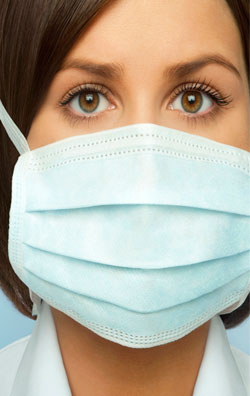
MERS is nothing but the abbreviation for a respiratory viral illness called as Middle East Respiratory Syndrome. It has a slight resemblance to pneumonia. The causative agent is a corona virus; MERS-CoV. These viruses are also the cause for Severe Acute Respiratory Syndrome (SARS). MERS is a severe heightened respiratory infection.
Symptoms such as fever, cough, diarrhoea, very high fever, difficulty to breathe, etc. are also being noticed in patients. Some even showed symptoms similar to influenza. Even death occurs in certain cases. In some cases, the infected cases may be without symptoms. Individuals with kidney disorders, hypertension, asthma, cancer, diabetes, etc. are more susceptible to MERS. The disease spreads from person to person through close contact. The people who have contracted this disease are those who have lived in the Middle East or have a close contact with people who had lived there. Health care workers who are into helping the infected patients are also at great risk of contracting the disease.
Even though studies have been done, the correct source of the virus is not being found out. Assumptions have been made regarding its transmission. Camels, bats, etc. have also been under surveillance. In the early hours symptoms are non-specific. Droplets and airborne spreading of the infection should be taken care of.
For detection of this infection, PCR testing of the lower respiratory tract samples or sputum samples are performed. RT-PCR assays for the amplification of upE, hemi-nested sequencing which targets the RdRp which is present in all these viruses prove to be good lab diagnostic methods.Several interferon; IFN-α and IFN-λ were found to be effective against replication of the virus.
Since every clinical characteristic of the disease still remains unknown, the time taken for infection to be established is also mysterious.Camels are the main suspects of transmission, so they should be kept at a distance. Even certain researchers from the University of Columbia have isolated the MERS virus from two camels.
Face masks should be used while handling and when going close to the camel. Maintaining proper personal hygiene, food hygiene, prevention of taking in of unpasteurized and raw camel milk, eating only properly cooked meat, avoiding foods that are contaminated with animal secretions, helps to prevent the disease to a certain extend. Foods should be properly cooked and eaten in hot condition itself. Even though camel’s urine is believed to have medicinal value, it should not be taken in as such to prevent the disease contraction. The very best way to prevent infection is to not get out of the house during the illness. The flu-like illness when experienced by travelers should be taken seriously and go for immediate medication. Covering of mouth and nose prevents the spread to some extent. Alcohol based sanitizers prove to be more effective than normal soap.Several trials for development of vaccine are going on. Till now the tests has not found to be successful, even though certain of them are in anticipation of the results of the clinical studies.





